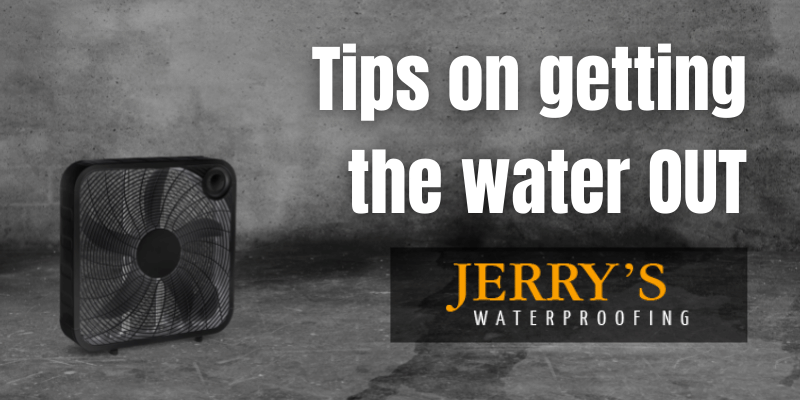
At Jerry’s Waterproofing, we pride ourselves on doing things right the first time. That’s why we always recommend seeking out a professional when it comes to water mitigation. Read on to learn how to remove water from a basement, as well as how we can help prevent basement flooding in the future.
How Does Water Enter a Basement?
It’s first crucial to know where and how water can enter your basement. Do you have cracks in your foundation? Does your foundation have moisture on the walls or floors? Does your basement smell musty? All of these questions help us understand how water got into your basement in the first place.
Small cracks in your foundation will allow water or moisture to seep through from the soil surrounding your foundation. If your basement is finished and you aren’t able to see any cracks, your sense of smell is going to be your friend in this case. If your basement smells musty or is humid, you have moisture coming in from the walls or floor of your foundation. It’s important to understand that just because you don’t see any cracks in your foundation, doesn’t mean that water can’t seep through. Concrete is a porous surface, which means that moisture is able to travel from one side to the other.
How to Remove Water from a Basement:
Now that we understand how water gets into a basement in the first place, we can start to develop a plan on how to remove the water. Please know that you should never rush into a flooded basement. Whether there are inches or worse, feet-of water in your basement, you can risk electrocution. Please consult your local professionals before entering your basement if water is present.
If you have a sump pump installed in your home, and it is functioning correctly, it should automatically be pumping water out of your basement. The sump pump will start pumping water out as soon as it reaches a certain level within the basin.
Your sump pump should be powerful enough to remove most of the standing water in your basement. It may take a while, but if the correct system was installed, you should be good to go. If your basement is flooded more than a few feet, external pumps may be needed to help remove the standing water quickly.
If you have a sump pump installed in your home and it is not working, do not enter your flooded basement. This may be a sign that the electrical in your home is compromised and can be extremely dangerous. In this case, call your local water mitigation professionals to assess the situation.
Once the water has been removed from the area, you’ll need to dry it out. In order to do so, you’ll also need to be careful to prevent mold and bacteria growth. Damp, moist areas are breeding grounds for harmful mold and bacteria, therefore it’s crucial to dry out your basement correctly.
Use dehumidifiers, high-powered fans, and heaters to take the moisture out of the area. It is hard for mold to grow in dry, hot (99 degrees), and windy conditions.
How to Prevent Future Basement Flooding
After your basement has been cleared of any remaining water and moisture, it’s time to focus on flood prevention.
Depending on the location, the grade of your property, and what flood prevention solutions you already have installed, there are a few permanent waterproofing solutions we might suggest. We offer basement drainage solutions, sump pump installation, battery back-up sump pumps, and the installation of waterproofing membranes. The best waterproofing method is the method that will work best for your home’s needs.
Need help with permanent waterproofing solutions for your home? Check out our Service Area page to see if you fall within our vicinity. The primary service area for Jerry’s Waterproofing is a 100-150 mile radius of the city of Omaha, Nebraska. We also serve the state of Iowa.



